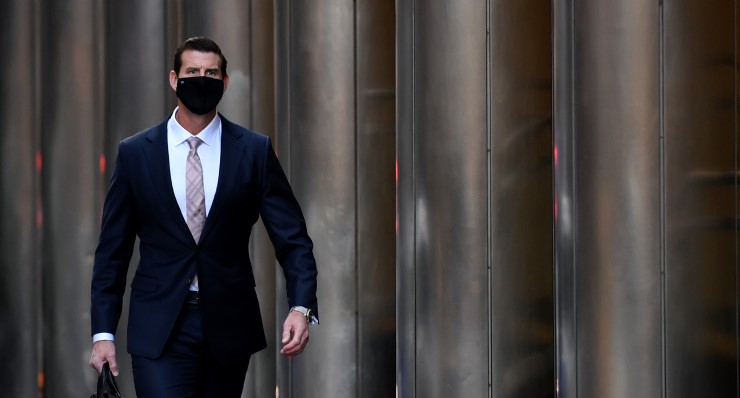
We are only about a quarter of the way through Australia’s biggest defamation case and already it’s being compared to Bleak House.
In Charles Dickens’ famous novel, the probate case of Jarndyce v Jarndyce went on for so long that legal costs devoured the estate, making any verdict redundant. In this matter, former soldier Ben Roberts-Smith is suing three media outlets over reports which he says depict him as a war criminal and a domestic abuser. In articles published in 2018, he is accused of six murders of Afghans under the control of Australian troops, in breach of the armed forces’ rules of engagement.
Roberts-Smith denies all the allegations, and the newspapers are relying on the defence of truth.
The statement of claim was lodged more than three years ago and the case is only just getting started; the legal bills are now astronomical, with each side estimated to have racked up costs of more than $12 million. If it keeps going at this rate, the legal fees could reach a total of about $100 million by the end of the trial.
Nine Entertainment, the publisher of The Sydney Morning Herald, The Age and (formerly) The Canberra Times, reported a net profit of $225.2 million in the six months to December 2021. If it loses the case, it will have to pay most of Roberts-Smith’s legal fees, putting a hole in the company’s balance sheet. In any event, shareholders may ask about the case at the next annual general meeting, wanting to know why so much of their money was spent on a handful of stories.
Roberts-Smith is in a different position; it’s been reported that his mentor and employer, Perth-based billionaire Kerry Stokes, has lent the soldier the money to pay his legal bills.
This hearing is particularly complicated — more than 20 witnesses are due to be called and much of the evidence is being heard in closed court over national security concerns. So far we have only heard from the Nine witnesses; Roberts-Smith’s witnesses will start in a few weeks’ time.
We’ve heard evidence of Roberts-Smith’s unpleasant behaviour, including bullying, adultery and lying. In the court of public opinion, the former soldier has been tried and found guilty. But public opinion is not deciding this case and there’s a difference between being a horrible person and a war criminal.
Actual eyewitness reports are thin on the ground and much of the evidence is circumstantial; witnesses have given evidence that they surmised that Roberts-Smith had shot an unarmed Afghan because they saw his gun next to the body.
This week the court has heard that Roberts-Smith told soldiers at training exercises in Australia that Afghan prisoners should be shot dead and discussed placing weapons on prisoners’ bodies to make it appear that they had been killed in combat.
Another witness gave evidence that Roberts-Smith turned to him in 2006 at a bar on the army base in Afghanistan and said: “What the fuck are you doing here? I should smash your face in.”
We’ve also heard evidence of him threatening to shoot his fellow soldiers and also to take away his children if his former wife didn’t follow his instructions. But his character is not on trial; his actions are. In order to win, Nine must prove that he murdered a handful of unarmed Afghans and hit his former mistress, known as Person 17, on the face.
This week, when the military witnesses were in the witness box, cross-examination has been quite tedious, with senior counsels Bruce McClintock and Arthur Moses repeatedly asking questions of the witnesses, listening to the answers and then putting it to them that they are lying.
It seems time-wasting, but in fact it’s an important process. According to the rules of evidence, a cross examiner cannot rely on evidence that is contradictory to the testimony of the witness without first putting it to the witness. It’s also known as the “anti-ambush” rule and gives the witness the chance to justify the contradiction.
After this evidence has been put to the witness, senior counsel can address the issues in final submissions and then it’s up to the Federal Court’s Justice Besanko to decide which version of the truth he believes.
A major issue is the deadening effect these types of defamation trials have on the business of journalism. With so much money spent on lawyers, media bosses become very reluctant to publish stories with even the whiff of controversy. While cases like this one hog the headlines, back in the newsrooms journalists are discouraged from publishing stories which could attract a lawsuit, which means fewer stories which hold power to account. Ultimately, we will all pay a price.








Crikey encourages robust conversations on our website. However, we’re a small team, so sometimes we have to reluctantly turn comments off due to legal risk. Thanks for your understanding and in the meantime, have a read of our moderation guidelines.